We’ve left the “End of the World” (Ushuaia, Argentina) to thaw out in wine country. We have enjoyed temperatures in the mid-80’s (degrees F), and walking around town.
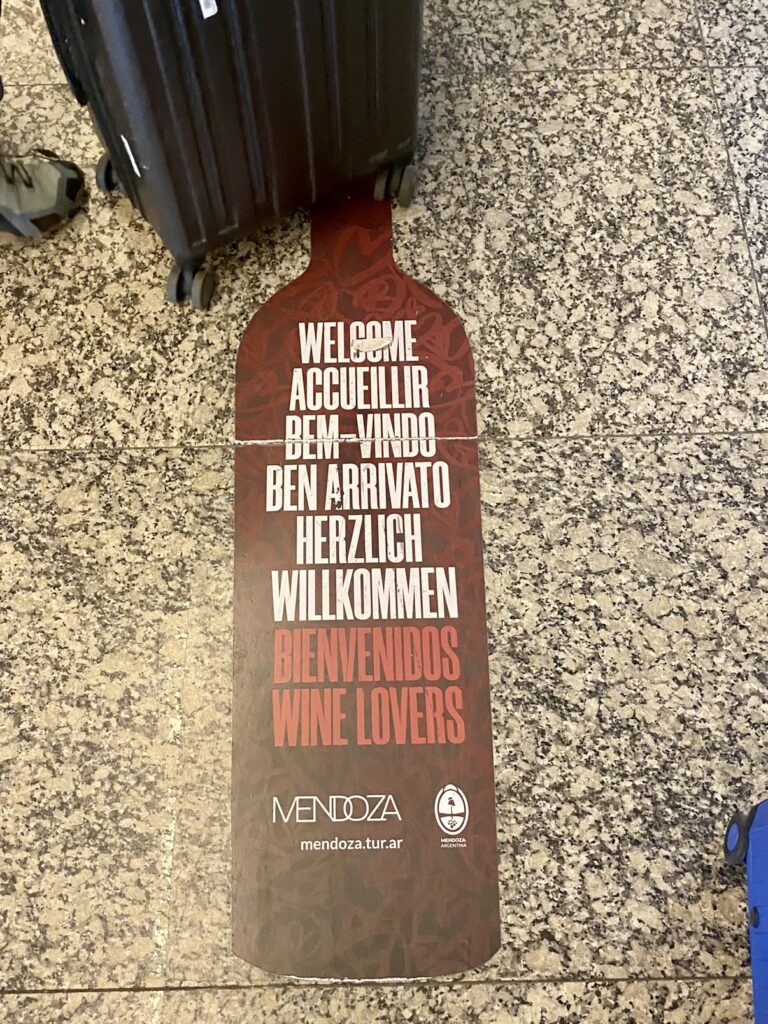
We arrived the day before Christmas Eve and checked into our downtown Mendoza apartment. It is the first of two apartment rentals we have in the area, and after eight nights we moved just south to the small town of Lujan de Cuyo, where we will stay for four weeks.
This will give us lots of time to explore the city, the vineyards, and the nearby mountains.
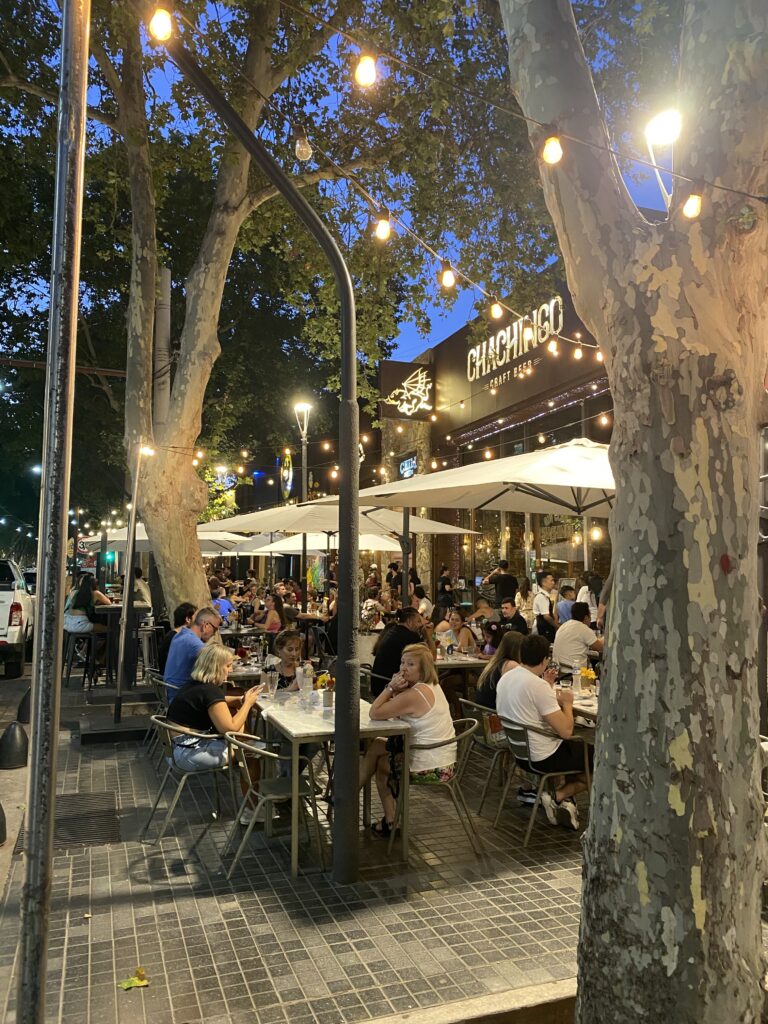
We have found Mendoza’s tree lined streets and handsome plazas to be refreshing after spending a few weeks around ice and snow. Our apartment was located near a large park. I wish we would have walked through there more than we actually did. Mendoza reminds me a lot of California. It’s dry, warm and many of the plants around are similar to those found in California. Plus there is plenty of grapes growing and wine flowing!
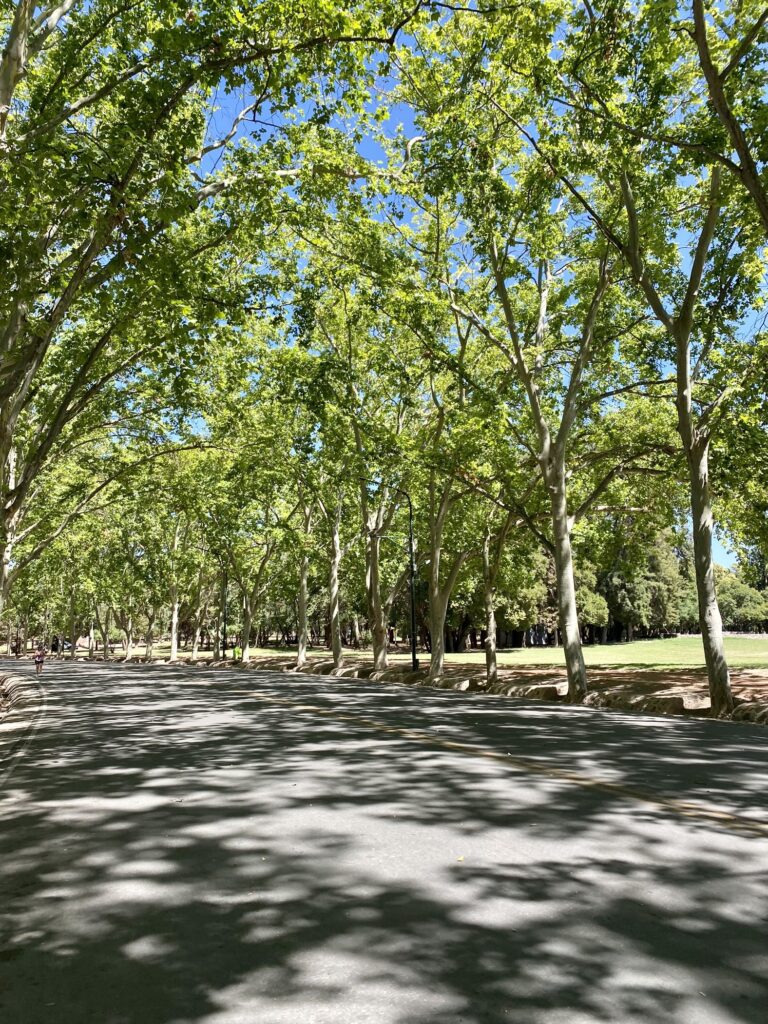
Here are the highlights from our first week.
Cuisine
Steaks, steaks everywhere…
Our first four dinners were indeed steak. We dined out three times and Corey made dinner on Christmas Eve.
Upon arriving at our apartment in Mendoza, we walked through the neighborhood and found ourselves at the popular Arístides street, the heart of nightlife in the town. We stopped for a happy hour fernet-and-coca (a popular Argentine longball), and then went next door to Hannk’s for skirt steak (entraña). I did not get pics of this meal.
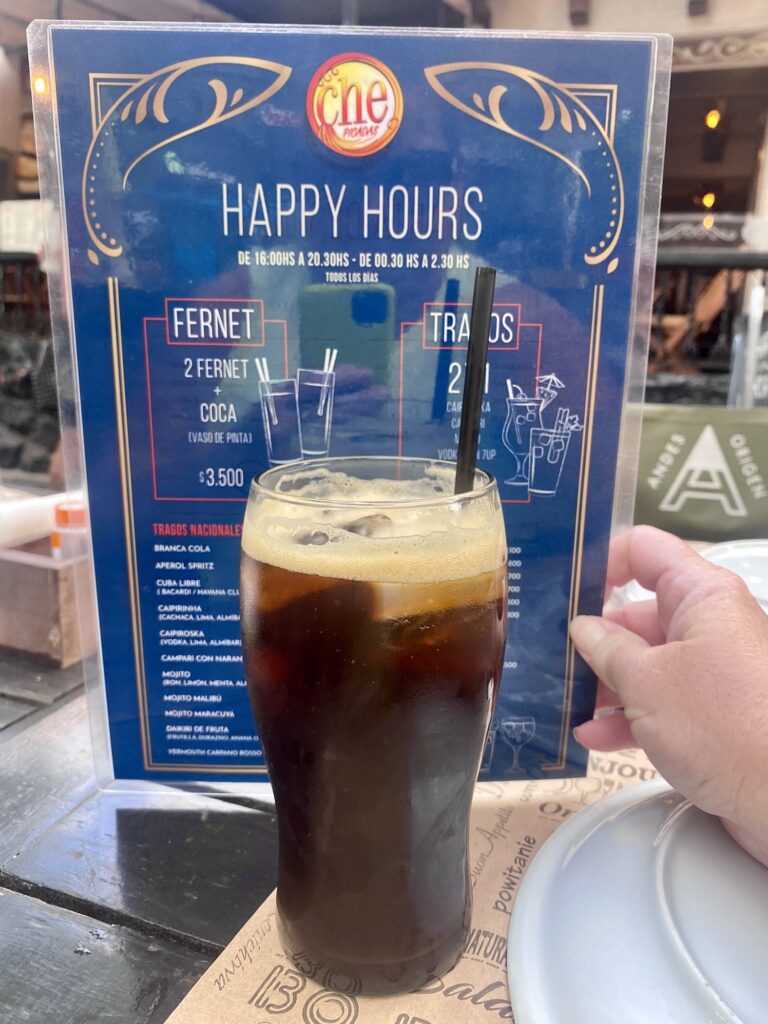
Our Christmas Eve dinner was a ribeye roast (ojo de bife): 20 ounces at the grocery store for around $4 USD. Lacking an asado grill, Corey carved it into steaks and pan-seared it. It may have been the best, cheap steak I’ve ever had.
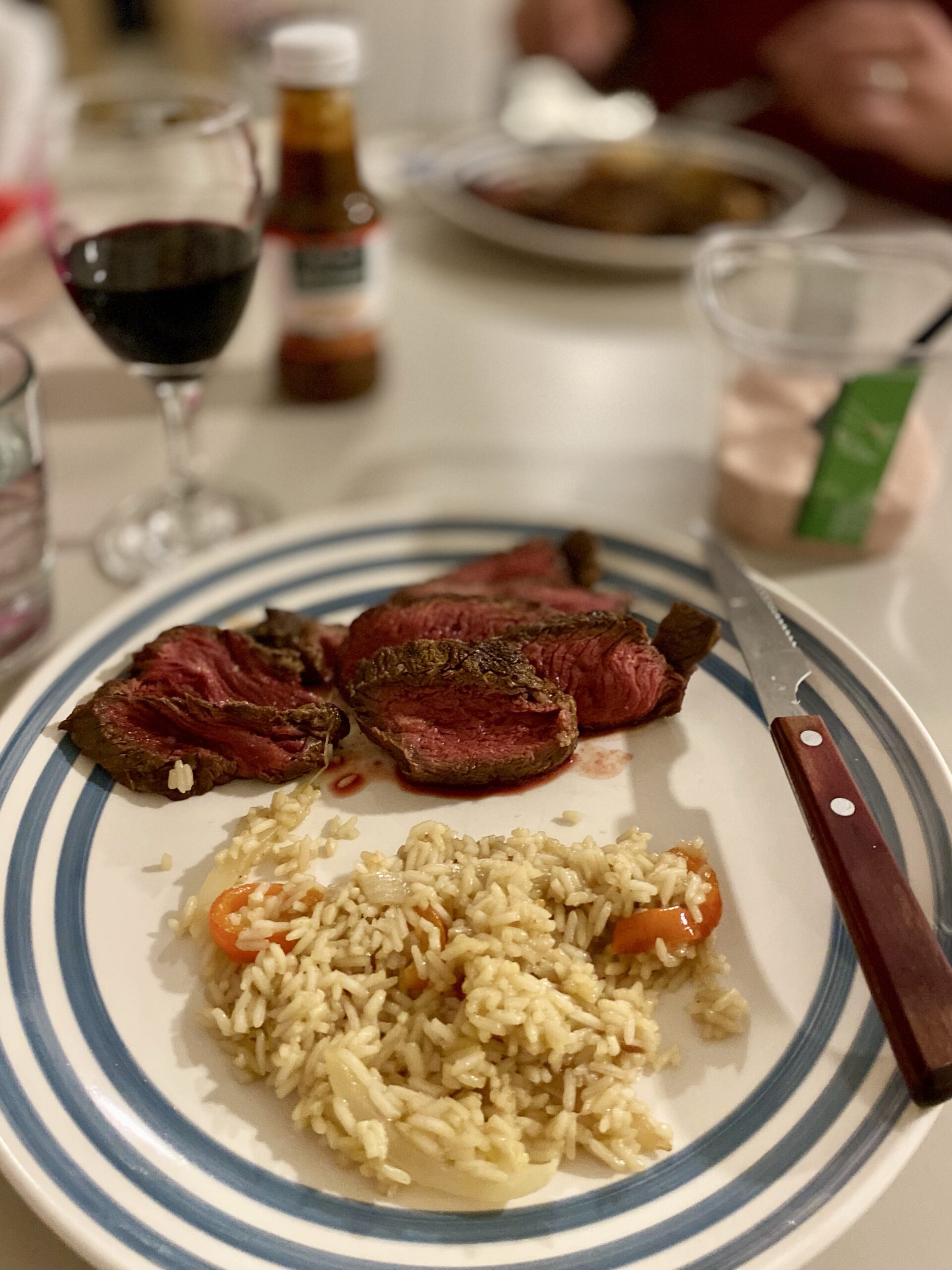
Christmas Day we dined out at Rosarita’s, again on Arístides Street. We were enticed by the fire and enjoyed a large sampling of beef paired with wine, empanadas, cheeses, salad, and fries. Dinner was a relative holiday splurge and the whole meal cost about $76 USD. (We ordered a pricey red blend which drove the bill up.)
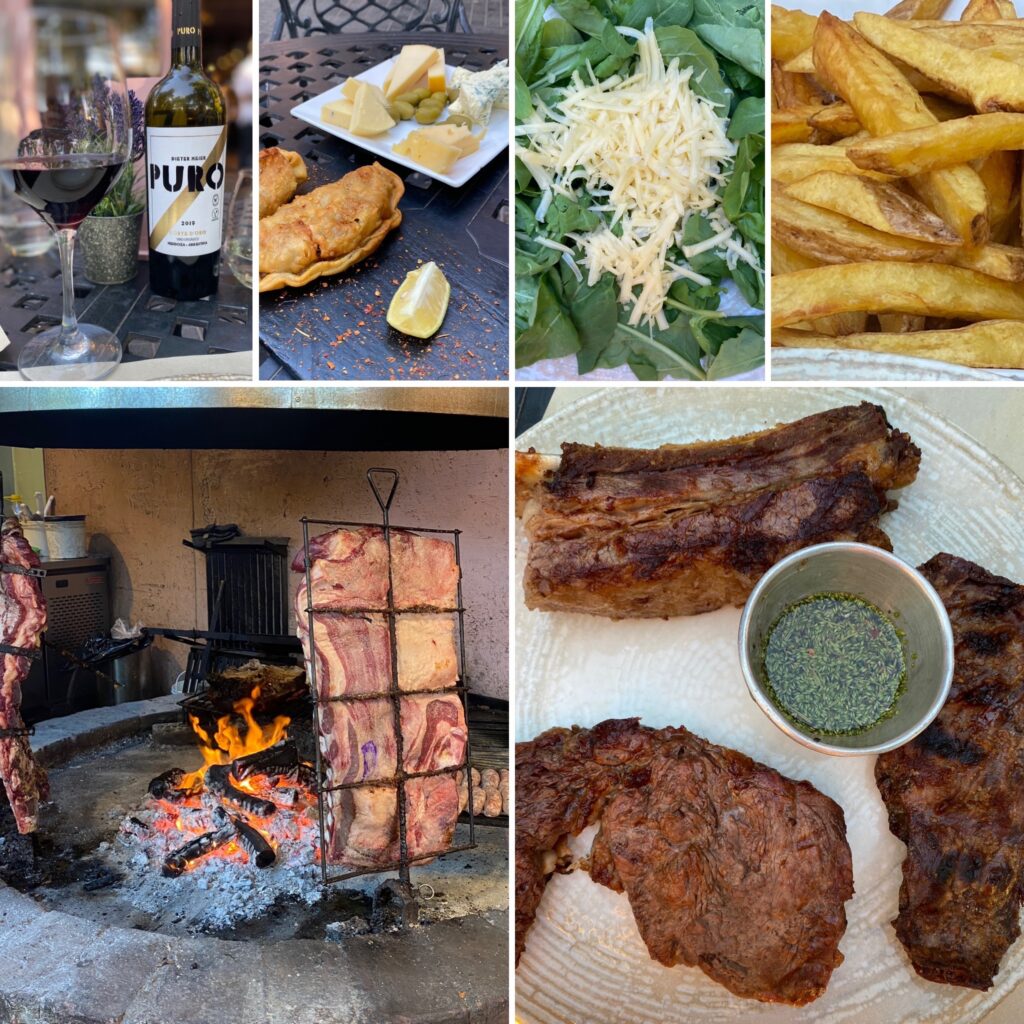
And just to make sure we celebrated Christmas with enough beef, we dined at Abrasado for Boxing Day. This was an absolute splurge and kind of a culinary event.
We were greeted by the hostess with a glass of Sauvignon Blanc. We dined al fresco and had a large meal.
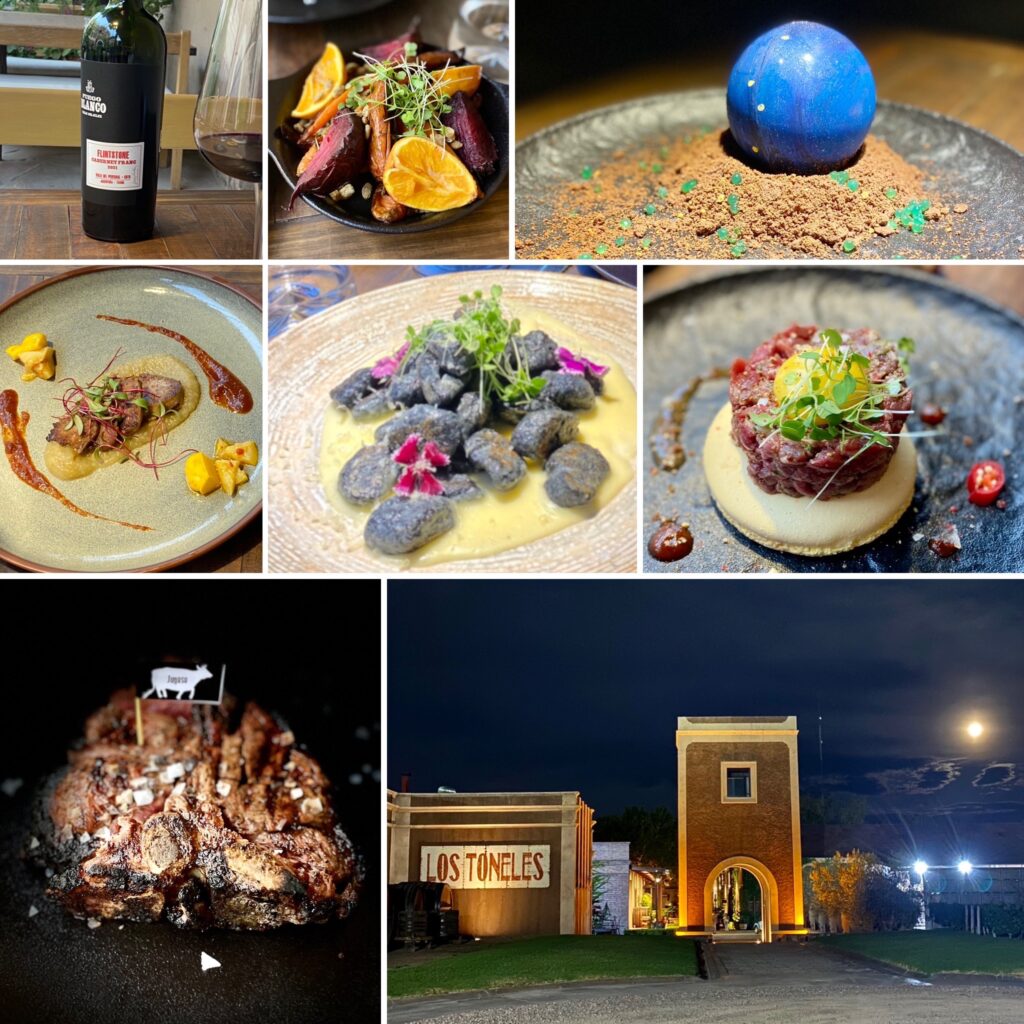
The steak tartare was a true highlight as it was served on a macaron cookie, and the combination of sweet and meaty was delicious and unique! The other highlight was the pepper grinder. The server used the largest pepper grinder we’ve ever seen, so we had to pose with it. Here is an Insta reel of the dinner.
Each night we tried eating later and later to assimilate to Argentine life. We have worked our way up to a 9 pm dinner time, which is still a bit early for the Argentines!
Wine
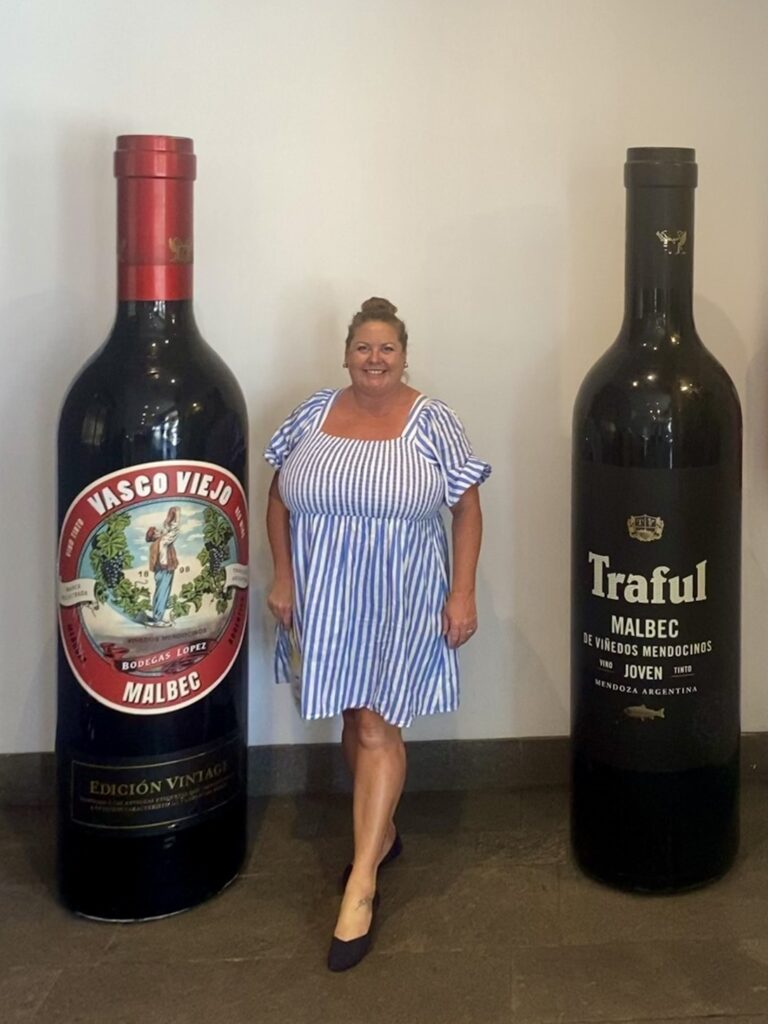
Now that we are in wine country, we have been delving further into the local viticulture. We meandered through the aisles at grocery stores and wine shops and also enjoyed a tasting and meal at Bodegas Lopez.
The best wine shop we found was Código Vinario and the clerks were passionate wine drinkers that enthusiastically encouraged us to visit again later in the evening, where they finish their work with a glass of red wine. They work with smaller producers, which is something we have not seen as much of in Argentina.
Bodegas Lopez
This was a last minute decision to hop in a cab and visit Maipu, the closest wine-growing region to downtown Mendoza. We reserved a table for lunch and then took their English tour.
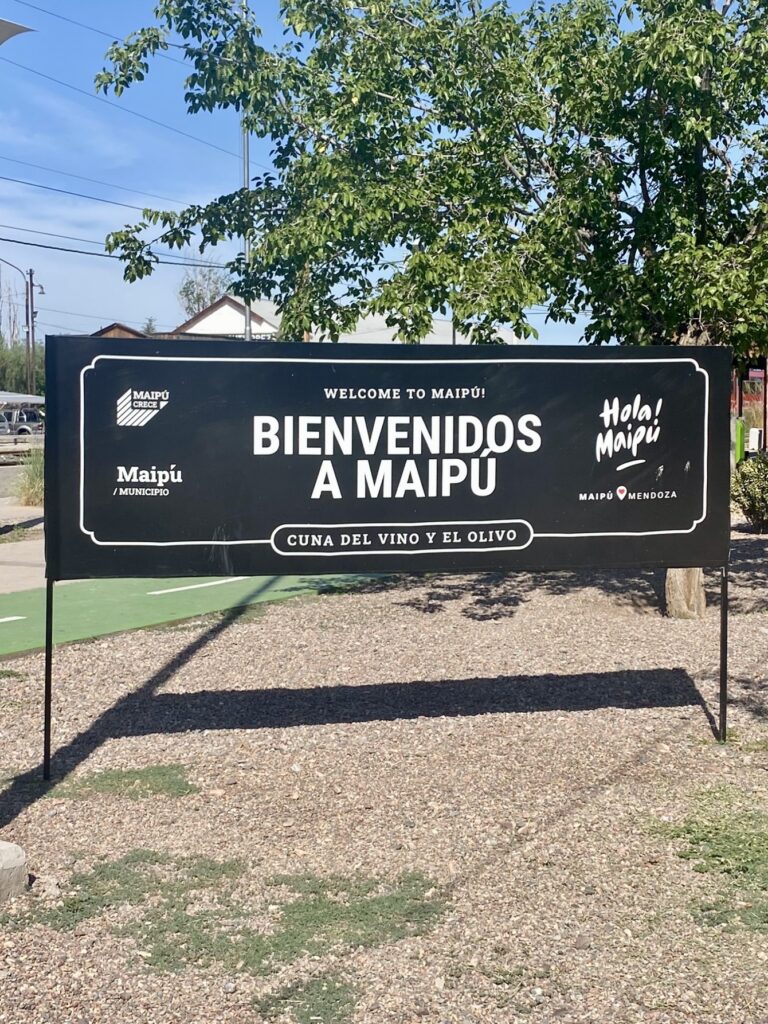
Lunch was outstanding! We created our own three-course menu with each dish accompanied with the restaurant wine recommendations. This gave us a chance to try a few wines.
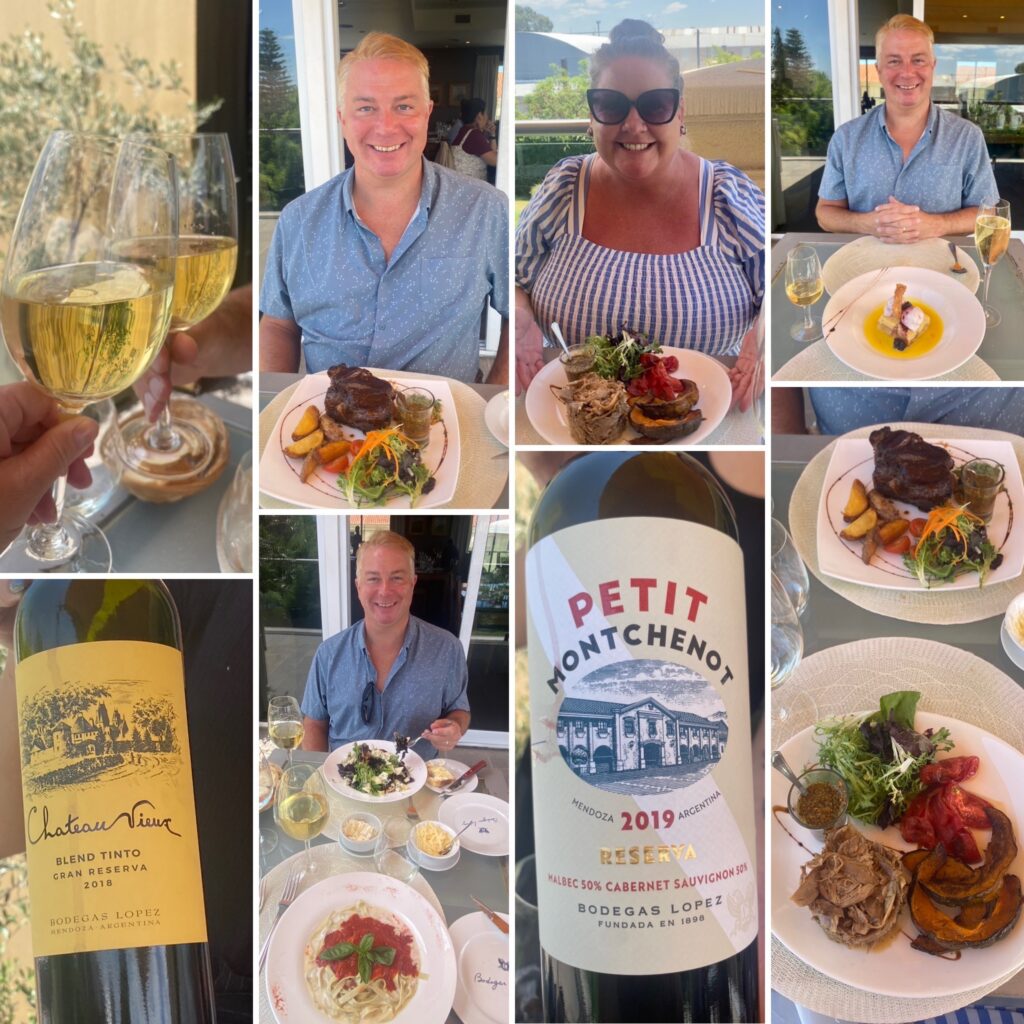
The wine tour was about an hour long in which we learned the history of the winery and some technical winemaking facts. I enjoyed seeing the large 100 year old oak barrels and hearing about the tank fermentation process. The tour was about $5 USD per person and included some tastings at the end.
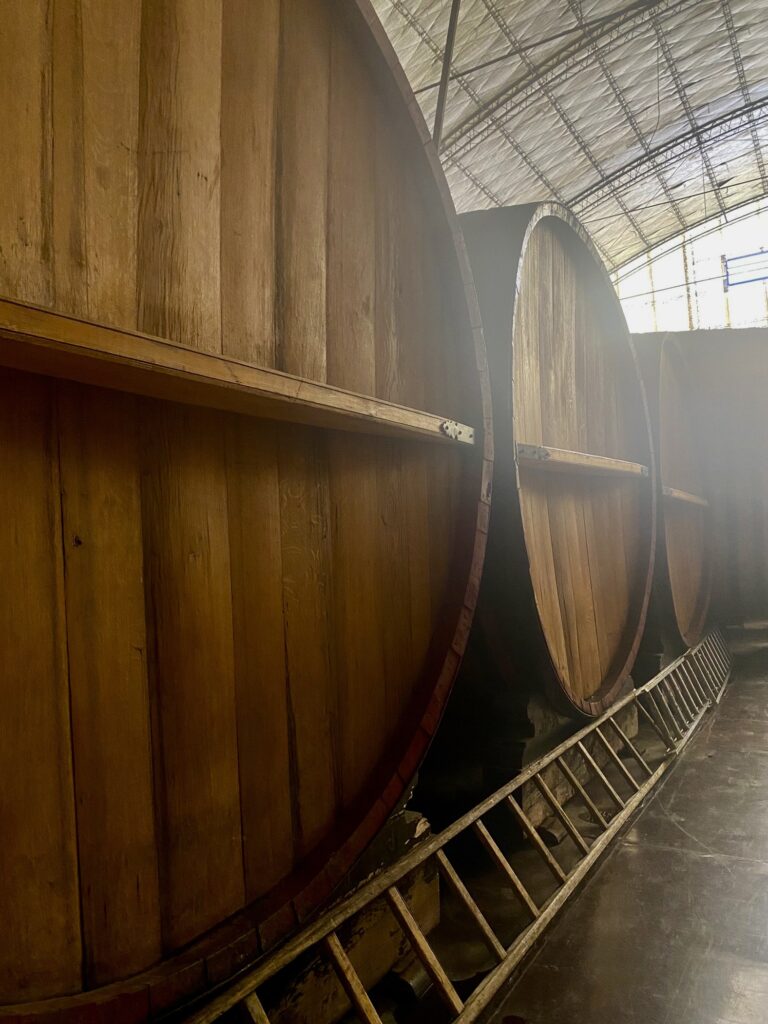
Argentine Wine Facts
Argentina is the fifth largest wine producing country in the world behind Italy, Spain, France and the USA. Argentina produces wine in 14 of its 23 provinces. Of all the wine produced in Argentina in 2020, 72% came from Mendoza.
Between 2001 and 2022, consumption per capita of wine in Argentina has been steadily decreasing and Argentines consumed 18 liters per person in 2022. I’d love to see some stats on how much tourists drink while visiting!
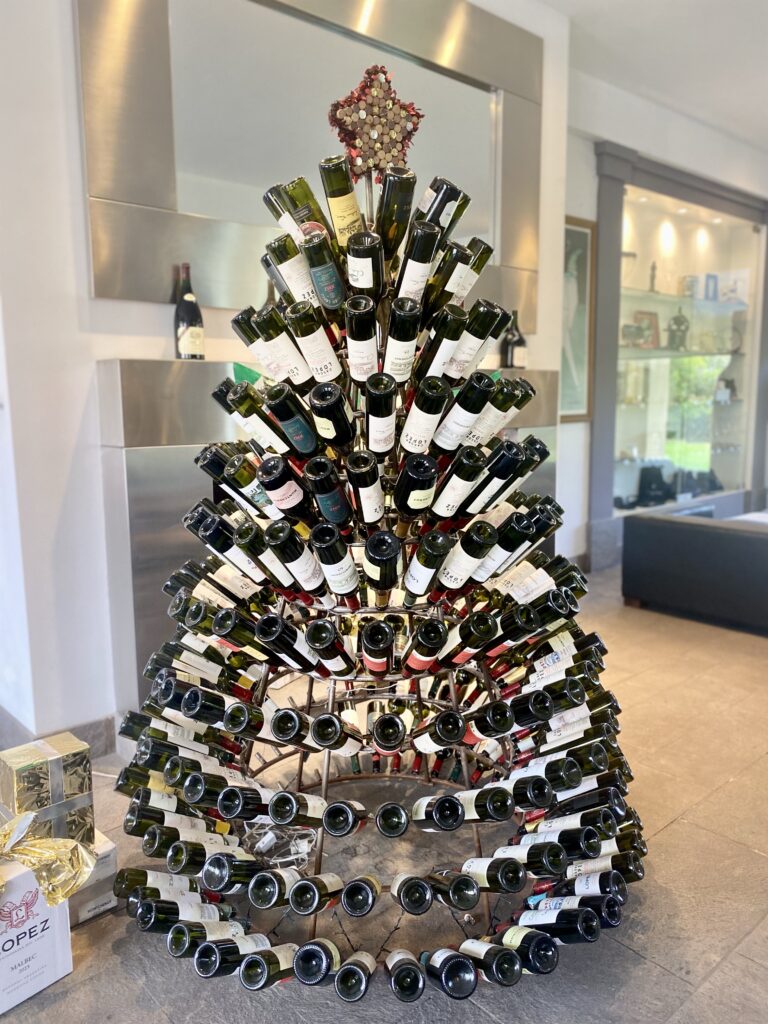
Wine Secret
We have a secret to share with you all: we have not been particularly impressed with Argentine Malbec as a varietal wine. We looked back through our Vivino ratings and found we liked Malbec from Cahors, France, and Washington (especially when in Bordeaux-style blends). These are stronger, more-tannic expressions, often receiving more oak treatment. We will keep drinking Argentine wine here, and hope that over the next four weeks we can find a Malbec that we really like. And a decent bottle of Malbec is available for $3 USD retail or around $10 USD in restaurants. That’s a nice quality-price ratio. But it is also around that price for red blends that include Malbec, or for a varietal Cabernet Sauvignon, or even Cabernet Franc (which is grown in abundance).
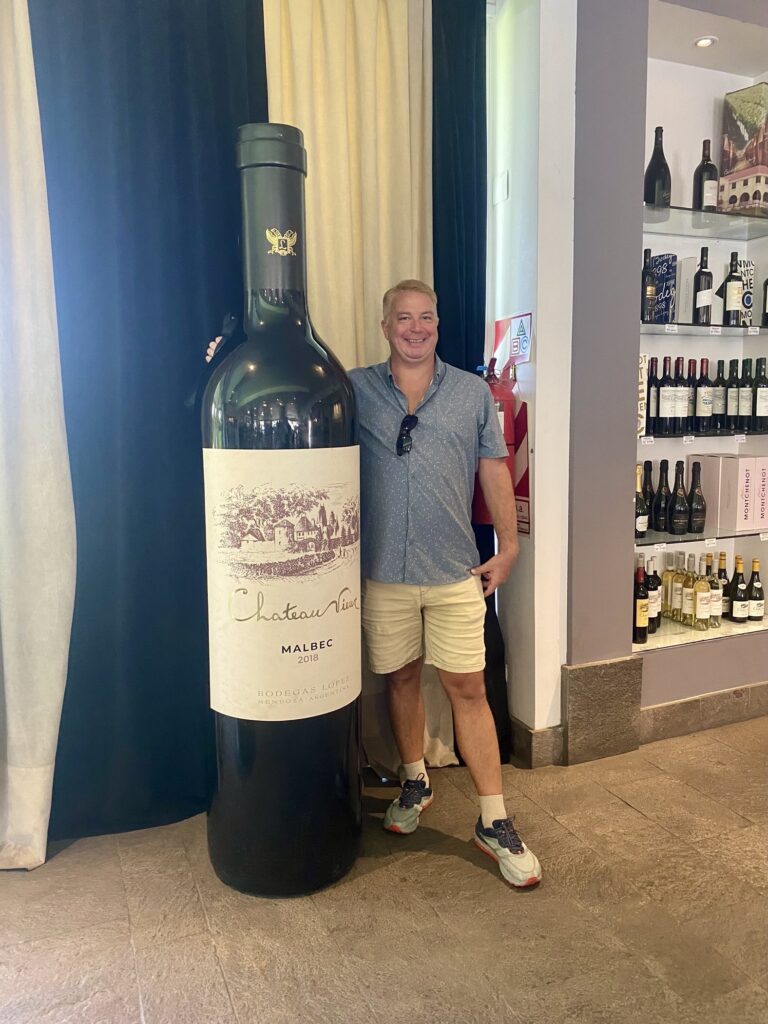
Another personal confession is that I have enjoyed Argentine chardonnays. I typically roll my nose at chardonnays. But the ones here are either unoaked or lightly oaked, and they are delicious!
Vermouth
While in Spain back in 2022, I discovered my fascination and admiration for vermouth. There it is common to sip on vermouth at a sidewalk café, which they serve with potato chips and olives. It’s made with wine grapes then fortified and aromatized, and you’ve probably had it in a martini at some point in your life.
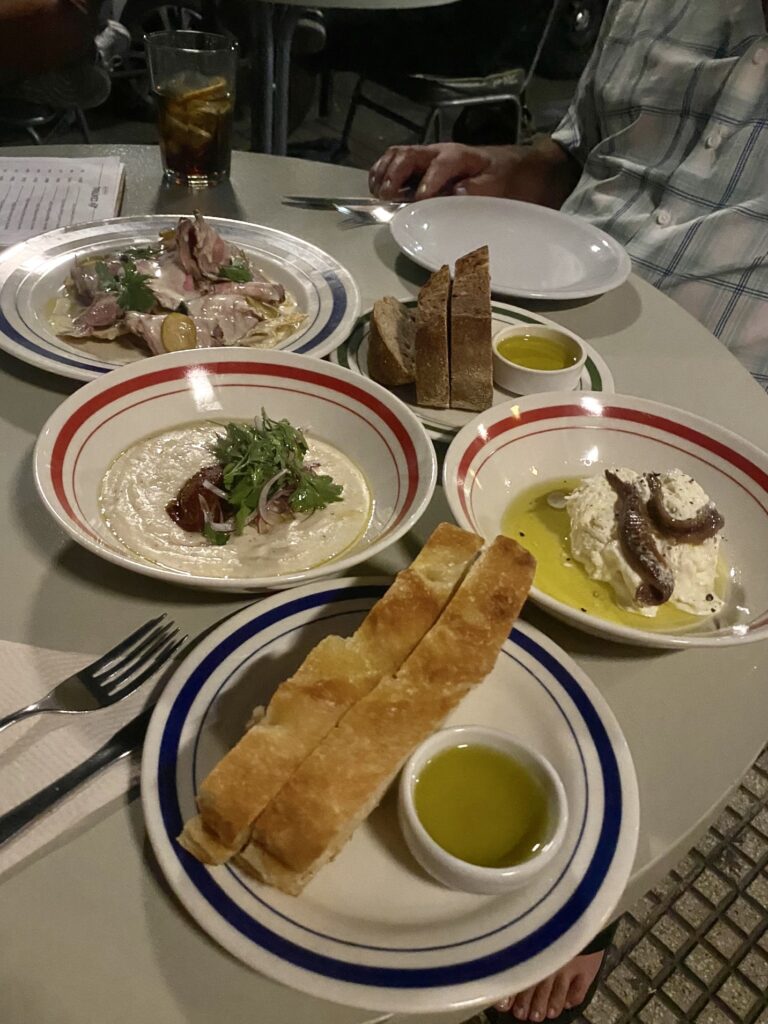
Since Argentina has a strong European influence, vermouth has been readily available. We even discovered a vermouth-focused restaurant called La Central Vermutería. We enjoyed NOT having steak for one night. Instead we feasted on fresh bread, hummus, burrata, pate, and veal tonnato. Of course we paired this with a selection of local Mendocino vermouths!
What’s Next
Leave Mendoza town and go to the more-rustic town of Lujan de Cuyo (still in the Mendoza region), where we will stay in a residential neighborhood and continue to explore the region for another month. Happy New Year!
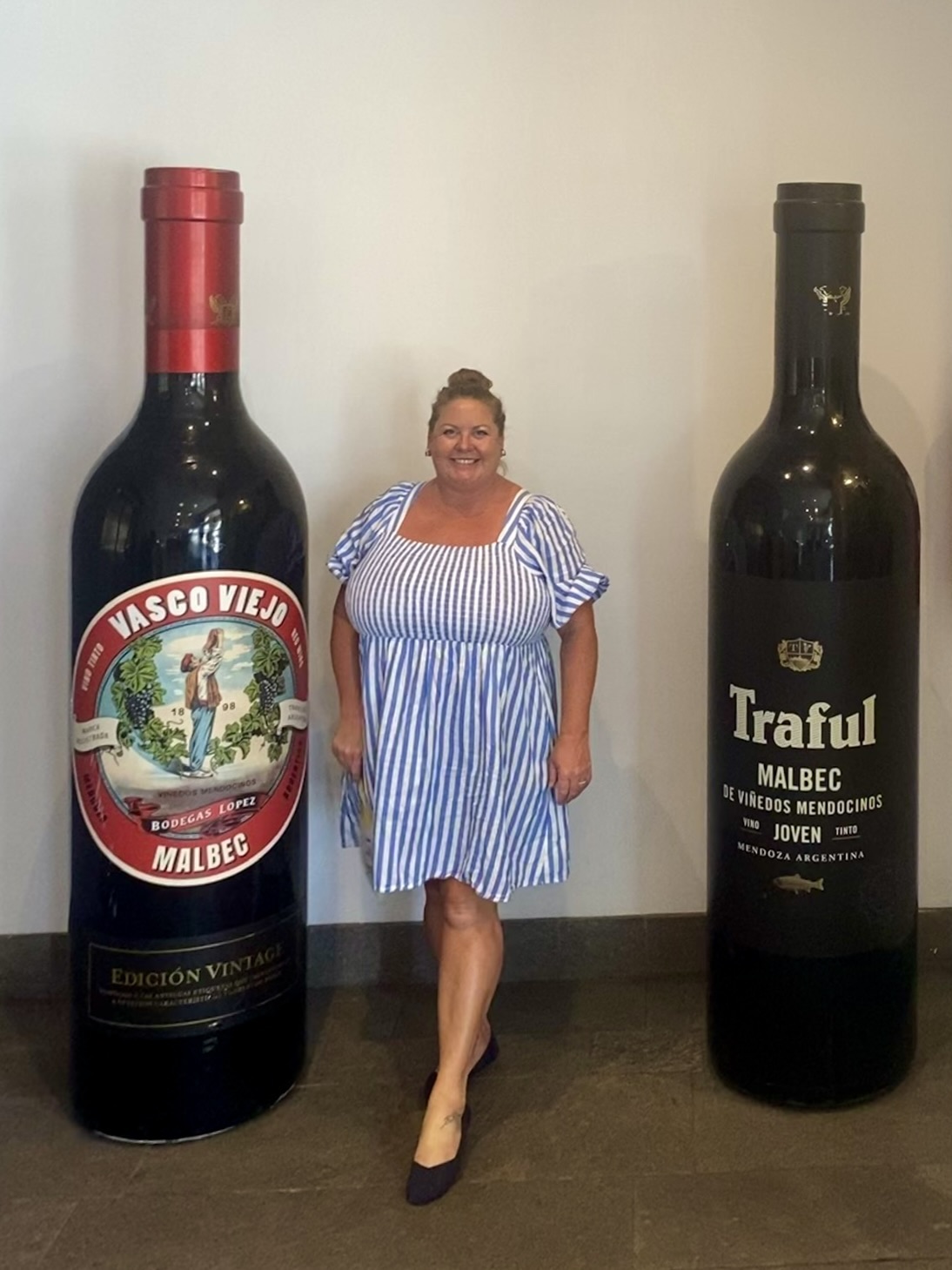
Wow! I never really got into wine, but this post is making me want to try some when and if I make it to Argentina. Love your food photos, too– they make everything look delicious!
Hi! Thanks for the comment. Wine is not for everyone, but for those interested in exploring, there is a wine for everyone, haha. From classic old world styles to fresh pet-nats, Argentina makes a lot of inexpensive and good wine. Thanks for the compliment about the food photos. I swear the food looks better in person!!!